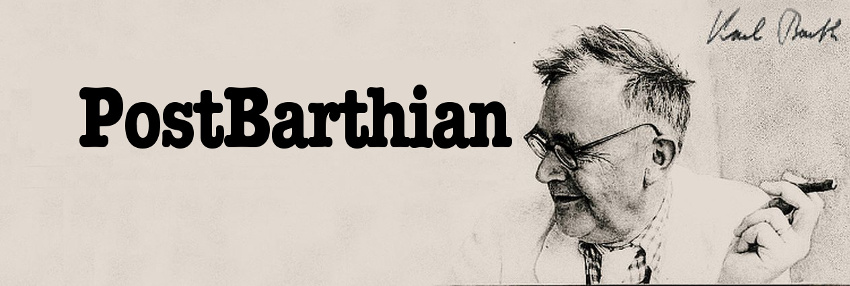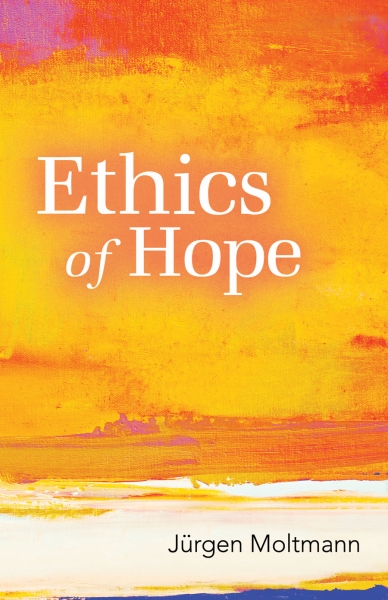Jürgen Moltmann wrote his recent book, The Ethics of Hope, as a companion to his infamous, Theology of Hope. Karl Barth requested such a book as this in his review of the Theology of Hope in his personal letter reviewing it, where Barth wrote: "your book gives us no concrete guidance on ethics in this sphere, determined and bordered by the eschaton."
What is particularly striking in the Ethics of Hope are the chapters devoted to the rights of the Earth. Many evangelicals are enemies of environmentalism and the stewardship of the earth, and are in denial regarding the impending ecological catastrophe approaching. Throughout the book, Moltmann moves to the forefront the mandate that we preserve the earth and protect it from becoming a desert.
The following quotations from the Ethics of Hope survey the particular urgency for Christian's to acknowledge the right's of the Earth. The book also contains excellent studies on the Sabbath in relationship to Creation and an explanation of the Gaia Theory, and many other excellent topics similar to what Moltmann had previous written in God in Creation.
“Yet the biosphere of the blue planet earth is our limited space for living. A human civilization that spans the world and is based on growth and consumption has long since arrived at these limits and is beginning permanently to destroy the living conditions of this living space in the earth’s organism. Year after year, animal and plant species are becoming extinct; atmospheric pollution is destroying the ozone layer and raising the climatic temperature; the polar ice caps are melting; the water level of the oceans is rising; the deserts are spreading, and storms and hurricanes are on the increase. We know all this, or we can know it, but it is as if we were paralysed, changing neither our economic growth ideology nor our private and public way of life. We are not acting on what we know.”
Jürgen Moltmann, Ethics of Hope, pg131-132
Again Moltmann brings the ecological catastrophy near to us in recent events:
“The ecological catastrophes which are already making themselves felt in climate change do not stop at national borders. The Chernobyl nuclear disaster in White Russia in 1986 already poisoned the forests in Scandinavia and Bavaria. The catastrophe in the nuclear power stations in Fukushima, Japan, in 2011 had consequences which cannot yet be seen, not merely in Japan but also on life in the surrounding ocean and in the atmosphere. International ‘earth politics’ can only be realized through the joint efforts of the nations, the trade associations, and the growing number of non-governmental organizations.”
Jürgen Moltmann, Ethics of Hope, p504
In Moltmann's letter in response to Karl Barth's review, he links eschatology and apocalyptic literature in the bible to ethics. In the following selection, Moltmann demonstrates how evolution has de-godded man, and placed man in solidarity with the earth from which he was raised. The resurrection of our bodies includes the resurrection of the earth from which our bodies have been made, and we are no longer demiurges waiting for this creation to be burned up in a fire ball:
“If Darwin is right and human beings and apes have a common ancestry, this means the end of the human being’s godlike position. As the Bible says, he is formed of the earth and can fulfil his specific human tasks only within the community of creation. Since we have come to realize that it is the religious-scientific anthropocentricism of modern times which has brought us to the present ecological crisis of nature and human civilization, we no longer see Darwin’s evolutionary theory as an attack on Christian anthropology, but begin to understand that the human being belongs to the same family as other living things on this fruitful earth. That is ultimately also the substance of the covenant with Noah, with which creation begins afresh after the Flood. It is a covenant ‘with you and your descendants after you, and with every living creature’ (Gen. 9.9–10). So all living creatures are God’s covenant partners and our covenant partners too.”
Jürgen Moltmann, Ethics of Hope, pg324
Another helpful example is the Orthodox Icons of the Cosmic Christ that depicts Jesus being born in a cave showing his birth from the earth and union with it as the redeemer of the world:
In Isaiah 4.2 the messiah is even called ‘a fruit of the earth’. This salvific mystery of the earth also finds expression in a German Christmas carol which calls on the Saviour to ‘spring from the earth’. The earth is not only the mother of all the living; in this perspective it is also ‘the womb of God’, that is to say the mother of the Saviour and of salvation. On Orthodox icons the birth of Jesus is depicted not in a human stable but in a natural cave in the earth.”
Jürgen Moltmann, Ethics of Hope, pg300
Moltmann's explanation of evolution is a paradigm shift for those who have seen evolution as opposed to the 'created kinds' of the ancient past. Instead of the kinds being a fixed relic, the created kinds are not only the genus and phylum of animals in the Lost World of Genesis 1 but of all animals extinct, alive today, and yet to come into existence.
“THE FRUITFUL EARTH
In its creation account, the Priestly Code uses the phrase ‘earth, sea and air’ to describe the living spaces for the living things which are going to exist in them. It is ancient wisdom that the living spaces are created first of all, before there is any mention of living beings. For these living spaces themselves are not empty and passive; they are fertile, energy-laden and productive. According to Gen. 1.20: ‘And God said, “Let the waters bring forth swarms of living creatures” . . . So God created the great sea monsters and every living creature that moves, with which the waters swarm.’ The ‘waters’ and the sea creatures are linked by this energizing excitement. Gen 1:24, 25: ‘And God said, “Let the earth bring forth living creatures. . . . And God made the beasts of the earth.’ Here the earth (erez) is granted the ‘vital power to bring forth’ together with which God ‘makes’ the animals. No other created thing is granted a creative power such as this. The earth possesses the energy for the evolution of life. Darwin was right. It is true that according to verse 25 God also ‘made’ the species, ‘according to Darwin’s evolution theory, for ‘kinds’ means the evolutionary leaps to new forms of life, not unalterable orders of creation.”Jürgen Moltmann, Ethics of Hope, pg293-294
The threefold creative activity unveiled in the world not only as the original creation (creatio originalis), but also as continuous creation (creatio continua), and new creation (creatio nova):
“I will not enter into models critical of evolution, such as creationism or theories about intelligent design, because I believe that both approaches are irrelevant. I shall follow a theological hermeneutics of nature and ask about an interpretation of natural phenomena sub specie aeternitatis. For this, we have to revise the traditional doctrine of creation, and to look at God’s creative processes in the history of nature. Having described the earth as creative space, we shall now consider the life-creating history of the earth and the evolution of life on earth. The Neolithic revolution to which we are indebted for our civilization took place only about twelve thousand years ago.
The biblical idea about God’s creation took its impress from Israel’s experience of God in history: the experience of the exodus from captivity through the wilderness into the promised land. Consequently, the idea about creation in the beginning is really the idea about the beginning of the divine creating. It is true that according to Hermann Hesse ‘there is a magic deep in every beginning’, but in creation the beginning holds within itself the promise of the goal and consummation of the divine creative activity. The creation Sabbath points toward the goal, which is the indwelling of God in the completed creation, the cosmic Shekinah.
Creation in the beginning initiates a divine creative process which will end in the new, eternal creation. We may therefore distinguish three stages in God’s creative process:
1. The creating at the beginning: ‘In the beginning God created the heavens and the earth’ (Gen. 1.1).
2. The continuing creation of the new: ‘Remember not the former things, nor consider the things of old. Behold I am doing a new thing; now it springs forth, do you not perceive it? (Isa. 43.18–19).
3. The completion of God’s creating activity: ‘Behold, I make all things new’ (Rev. 21.5).We are therefore talking about a unified creative process on God’s part, with a beginning, a way and a goal, and we ourselves are in the midst of this creative process, together with the history of the cosmos and the evolution of life.”
Jürgen Moltmann, Ethics of Hope, pg315-317
And in one final longer quotation, Moltmann explains what Genesis means when it says that man has 'dominion of the Earth', and essential explanation to all of us who have used the dominum terrae to destroy the earth, strip it of resources and life and fill it with pestilence and death in our Marcionistic despising of creation.
“ECOLOGICAL THEOLOGY AND SPIRITUALITY
The modern culture of expansion and the resulting ecological crisis have emerged from Christianity in its Western form. Is Christianity a factor in the ecological crisis? There are four points to be discussed in this connection:
1. The biblical requirement that the human being should rule over the earth (the dominum terrae) is often made responsible for human beings’ seizure of power over nature, and for the boundlessness of their will to power: ‘Be fruitful and multiply, and fill the earth and subdue it; and have dominion’ (Gen. 1.28). True, this text is 2,500 years old, and the modern expansion culture came into being only four hundred years ago; but torn out of its context, this human destiny to rule has acted as a legitimation down to the present day.
2. The dominum terrae rests on the idea of the human being—and the human being alone—as being made in the image of God (Gen. 1.26). Whereas all other creatures display traces of God (vestigia Dei), human beings have been created to be God’s image, representative and governor on earth (imago Dei). It is from this notion that Christian cultural history has moulded the concept of the human person. The human being is not just part of nature. He is also ‘person’, called forth by God and responsible to God. This lends him his human dignity, the dignity which distinguishes him from all other living things. This gives him an inalienable quality as determining subject. As the subject of perception and will, the human being is God’s image on earth, and superior to all other created beings, which he can make the objects of that perception and will. Although according to the biblical traditions, this special human determination has validity only within the community of creation (so that it is only as a part of nature that the human being is ‘person’), in Western cultural history this destiny has nevertheless legitimated the subjugation of nature and the instrumentalization of bodiliness.
3. In spite of the whole primary theocentric thrust of the biblical traditions, the concepts of the imago Dei and the dominium terrae still reveal a secondary anthropocentrism. The creation of other beings on earth points towards the creation of the human being, according to Genesis 1, and according to Genesis 2–3 human beings are at the centre of the Garden of Eden, and are also the centre of the curse which falls on all flesh because of their guilt. Israel’s experience of God is primarily the experience of God in the happenings of human history. At the centre of Christianity is faith in the becoming-human of God. In European cultural history Christian anthropocentrism slowly pushed out the cosmocentrism of the ancient world and prepared the way for the anthropocentric project of modern civilization.
4. What had the greatest influence of all, however, was Jewish-Christian-Islamic monotheism. Through it, God and the world were divided. God was set over against the world as its transcendent creator and Lord, and the world was robbed of all the divine mysteries other religions revered in the nature of the earth. When monotheism robbed nature of its magic, it prepared the way for the world’s secularization and its degradation into being the object of human beings. ‘Mother nature’ became ‘unclaimed property’ which belonged to whoever first took possession of it.
In the history of European culture, the divine was seen for preference in the realm of what was spiritual over against what was material, in what was spiritual rather than what was bodily, in the historical rather than the natural, and not least in the male rather than the female. It follows from this that Christianity, viewed as a part of cultural history, is a factor in the ecological crisis into which the Western expansion culture is bringing the earth. What follows from this recognition is the need for Christianity, its spirituality and its theology, to be reformed, if we are to find Christian ways out of this crisis.
On the way to an ecologically responsible theology, what will be put in the forefront are the cosmological aspects of the doctrine of God and of anthropology.”
Jürgen Moltmann, Ethics of Hope, p347-351
Like Molmann's warning regarding the globalization of economics, the Ecological Catastrophe is also "Like a Crack in a High Wall." As a final word of encouragement, Moltmann once spoke of the Green Political Parties, and how they are often ignored due the two-party systems. He said that initially the Green Party's Agenda became to be accepted bit by bit, until at last both of the two significant parties both had significant Environmental Concerns.




Leave a comment